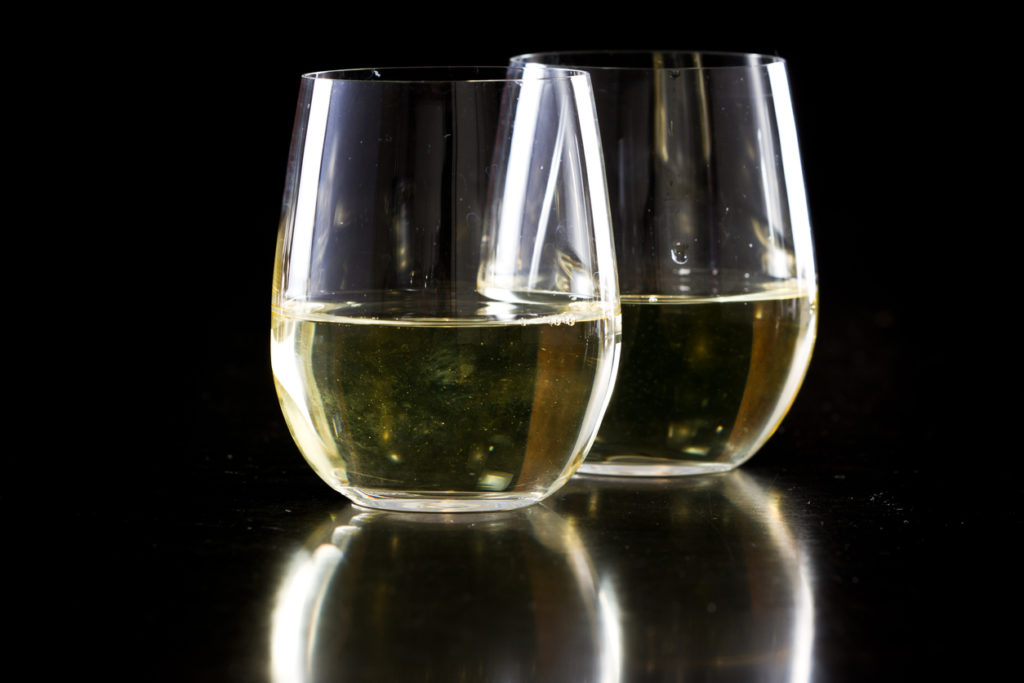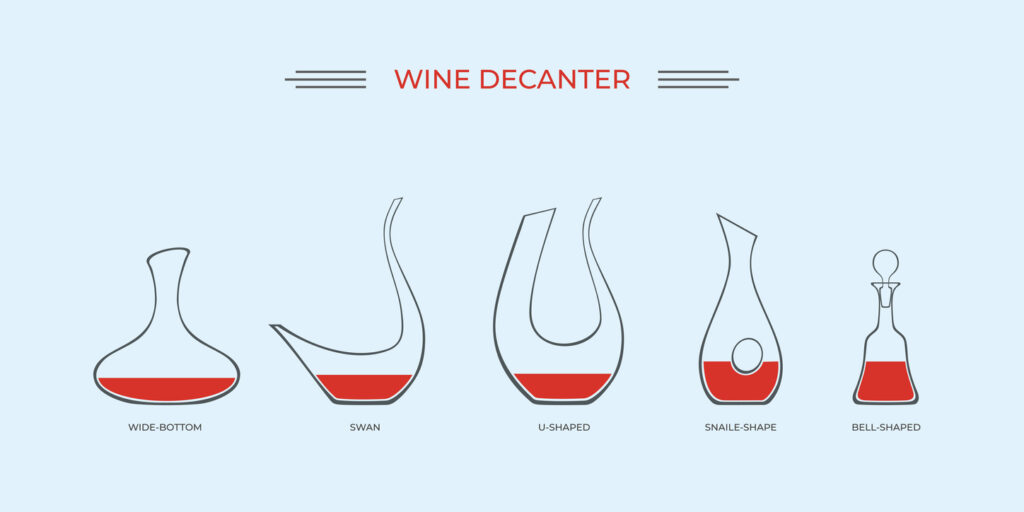Do you know how long you should let red wine breathe? The answer might surprise you. Some people believe that red wine should breathe for a short period of time, while others think that it is especially older wine that should be given ample time to aerate. So, how long should red wine breathe?
The answer depends on the type of red wine. Light-bodied red wines, such as Pinot Noir, can benefit from being aerated for 30 minutes to an hour. Medium-bodied red wines, such as Merlot, can benefit from being aerated for 1-2 hours. Full-bodied red wines, such as Cabernet Sauvignon, can benefit from being aerated for 2-3 hours.

Key takeaways
- Pinot Noir: 30 minutes to 1 hour
- Merlot: 1-2 hours
- Cabernet Sauvignon: 2-3 hours
- Mourvedre: 4-6 hours
- Let younger wine breathe longer than older wine
- letting wine breathe by decanting wine remives sulfury smell and helps develop the taste and to soften tannins
Why does wine have to breathe?
When it comes to drinking wine, you may have heard people talking about letting the wine “breathe.” But what does this actually mean and why is it important? Essentially, letting a wine breathe refers to allowing the wine to interact with oxygen. This process can help the wine develop its aroma and flavor profile over time.

When a bottle of wine is first opened, there can be a buildup of gases inside due to the cork being removed. This can cause the initial taste and aroma of the wine to be slightly off, a sulfury aroma (rotten eggs) or muted. Allowing the wine to breathe helps release these gases and allows oxygen into the wine bottle more, which in turn can help unlock more complex flavors and aromas.
Does white wine have to breathe?
White wine and sparkling wine are popular drinks among wine enthusiasts, and many people wonder whether it needs to breathe before being consumed. The answer depends on the type of white wine you have. Generally, white wines with low tannin levels do not need to breathe as much as those with high tannins. Sparkling wine hardly needs to breathe at all. In the case of sparkling wine letting wine breathe can be done by leaving it in the glass for a few minutes.
Tannins are naturally occurring compounds in grapes that give red wines their distinctive taste and texture. They are also present in some white wines but in lower amounts. When a wine “breathes,” it means that oxygen interacts with the wine in the aeration process, which can change its flavor profile over time. This process is essential for red wines because they have high levels of tannins that need to soften over time. However, for most white wines, breathing is not necessary since they have lower tannin levels.

6 Tips for How to Get the Most Out of Aerating Your Red Wine
Having a glass of wine can be an enjoyable and relaxing way to end the day. Red wines, especially those with bolder flavor profiles, will benefit from aerating before consumption. In this article, we will explore six tips for how to get the most out of aerating your red wine to enhance its flavor profile. Aerating your red wine slowly exposes it to oxygen, which can help open up the aromas and flavors of the wine.
Use a decanter:
Decanting young wine helps to separate the sediments from the wine, which can make younger wine in it taste better. After you pour the wine bottle into the decanter the wine gets into contact with air. It allows the flavours to develop and to soften tannins.
Another way to decant wine is to double decant red wine. When double decanting high tannin wine like younger Barolo or Rhone wines the red wine is poured into a decanter, the original bottle of wine is cleaned out to remove sediment and the red wine is poured back into the bottle using a funnel. You need to be careful with older wines as double decanting may be too harsh for them.
Use a wine aerator:
There are many different types of wine aerators available, from hand-held devices to sophisticated tabletop fountains. No matter which type less aeration you use, using an aerator can help your red wine breathe more quickly and effectively. Wine aerators are a good choice for lighter red wine like pinot noir which does not need to be decanted in all cases.
Temperature:
Make sure that the air temperature is right. Ideally, the temperature of the air should be around room temperature – not too warm or cold. If the air is too warm or cold, it will not do much good for how well your red wine breathes.
Environment:
Choose delicate wine in a quiet environment. Red wines need to breathe quietly in order to fully aerate and open up their flavors and aromas. So make sure that you are in a calm and quiet environment when you are giving your red wine time to breathe.
Aeration time:
Experiment with different aeration times. Different types of red wines may benefit from different aeration times, so it is important to play around and figure out how long your particular red wine needs to breathe in order to taste its best. Older vintages normally need little air compared to younger wines.
Vacuum Pump:
Use a vacuum pump. If you have an older bottle of red wine that is a bit corked or oxidized, using a vacuum pump can help draw out the unpleasant flavors and aromas, making your wine more enjoyable again. Just remember to be gentle when using a vacuum pump, as the last thing you want is for it to completely suck the cork right out of your wine glass.

Habits to Avoid When Breathing Your Red Wine
When it comes to aerating red wines, there are a few habits you should avoid to ensure that your experience with the beverage is as enjoyable as possible. Whether you’re an expert in aerate wine, or just looking to learn more about it, understanding what habits to avoid when breathing your red wine can help make the whole process easier and more rewarding. Here are some key tips on how best to aerate your red wine and which habits you may want to skip.

Do not use a straw:
This is a common mistake that people make when trying to aerate their red wine. While it may seem like a good idea to use a straw to aerate your wine before pouring it, it actually does the opposite. It oxygenates the wine too much and can ruin its flavor.
Do not use an electric fan:
Another common mistake people make when trying to aerate their red wine is using an electric fan to help circulate the air around the wine. However, this will only serve to oxygenate the wine too much and should be avoided.

Do not overdo it:
As with anything, there is such a thing as too much of a good thing, and this definitely applies to letting wine breathe. If you aerate your red wine for too long, it will start to taste bitter and flat. So make sure that you do not overdo it when giving your red wine time to breathe.
How to Tell if Red Wine is Done Breathing
One of the easiest ways to tell if red wine is done breathing is by using your nose. The aromas of the wine should be more pronounced and expressive after it has had some time to breathe. Another way to tell if red wine is done breathing is by tasting it. The flavors of the wine should be more well-rounded and integrated after it has had time to aerate.
If you are not sure how long to let your red wine breathe, just start with 30 minutes. Then taste it periodically to see how the flavors are changing. With a little bit of experimentation, you will be able to figure out exactly how long your particular red wine needs to breathe in order to achieve its full flavor potential.

Tips and Tricks for Getting the Most Out of Breathing Your Red Wine
Red wine is a wonderful indulgence that can be enjoyed in many different ways. However, to truly get the most out of its aromas and flavors, aerating your red wine is key. Aerating fine wine involves allowing air to mix with the wine for a certain amount of time before serving, which can have major benefits for the overall flavor experience of your drink.
Do not aerate your red wine for too long:
While it is important to give your red wine time to breathe, this does not mean that you should let it sit out for hours on end. Once you feel like the flavor and aroma of the wine have reached their full potential, it is best to either drink or store the wine. Prevent it from losing its freshness over time.
Experiment with different types of aerators:
Depending on how quickly and effectively you want your red wine to breathe, there are many different types of aerators available. Hand-held devices to tabletop fountains can help improve how well your red wine breathes. So do some research and experiment with different aerators to see which one works best for you.

Keep a record:
If you are trying to figure out how long your particular red wine needs to breathe in order to taste its absolute best. It can be helpful to keep a record of how long you let each bottle of wine breathe and how it tastes after that time period has passed. This will help you learn how different wines respond differently to the same amount of aeration. You can quickly adjust the aeration accordingly next time around.
Conclusion
With these tips and tricks, breathing your red wine is a breeze! So what are you waiting for? Start giving your red wine the time it needs to fully open up. Enjoy young wine in its full flavor and aroma today.

